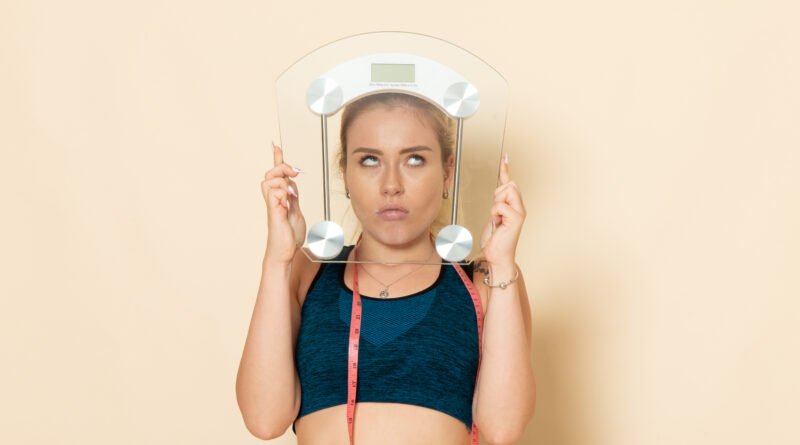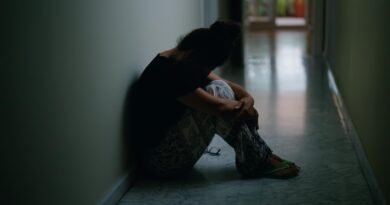Body Image: Embrace Yourself & Cultivate Self-Love
Body image refers to an individual’s thoughts, feelings, and opinions about their physical appearance. It is a complex concept influenced by social interactions, media representations, cultural influences, and individual experiences. A person’s body image can be positive (body satisfaction) or negative (body dissatisfaction), and it significantly affects one’s general well-being, self-esteem, and mental health. The concept of body image goes beyond mere physical appearance. It encompasses how individuals view their body in their mind’s eye, how they believe others perceive them, and how they feel about their size, shape, and physical attributes. Image of the body begins forming in childhood and continues to evolve throughout life, especially during pivotal developmental stages like adolescence.
Factors Influencing Body Image
Several interconnected factors shape an individual’s body image:
- Cultural and Media Influence: Unrealistic beauty standards portrayed in advertising, social media, and films often glorify specific body types while marginalizing others. Pressure to fit and unwelcome comparisons could result from this.
- Family and Peer Influence: Comments from parents, siblings, or peers—whether positive or critical—can deeply impact the image of the body. Peer acceptance, teasing, or bullying also plays a significant role.
- Personal Experiences: Experiences such as trauma, medical conditions, body shaming, or significant weight changes can alter how one perceives their body.
- Gender and Sexual Identity: Gender norms and expectations influence how individuals perceive and present their bodies. People in the LGBTQ+ community may face additional challenges around the management of the body and acceptance.
- Social Media Exposure: The constant comparison facilitated by photo-centric platforms can distort the image of the body, especially when filtered or edited images are taken as real representations.
Types of Body Image
Body image can be categorized into several types:
- Positive Body Image: Respect and admiration for one’s body despite social norms. Individuals with a positive body image accept imperfections and focus on body functionality.
- Negative Body Image: Persistent dissatisfaction and distorted views of one’s body. It could result in disordered behavior, low self-esteem, and humiliation.
- Distorted Body Image: Often seen in conditions like Body Dysmorphic Disorder (BDD), where individuals obsess over perceived flaws that are minor or non-existent.
- Neutral Body Image: A balanced view of the body that focuses more on functionality than appearance, without overly positive or negative feelings.
Impact of Negative Body Image
Negative image of the body can have far-reaching effects:
- Mental Health: Linked to low self-esteem, anxiety, and sadness.
- Eating Disorders: Conditions such as anorexia nervosa, bulimia nervosa, and binge–eating disorder are closely linked to body dissatisfaction.
- Social Withdrawal: Fear of judgment can lead to isolation and reduced participation in social activities.
- Unhealthy Behaviors: Excessive exercise, extreme dieting, use of weight-loss supplements, or cosmetic surgeries driven by dissatisfaction.
- Self-Harm and Suicidal Ideation: In severe cases, individuals may experience suicidal thoughts due to feelings of inadequacy related to the image of their body.
Promoting Positive Body Image
Developing a healthier relationship with one’s body requires conscious effort and supportive environments:
- Body Appreciation: Focusing on what your body’s capabilities are rather than its appearance is known as body appreciation.
- Diverse Media Consumption: Following body-positive influencers and consuming content that represents all body types.
- Mindful Social Media Use: Limiting comparison by unfollowing triggering accounts and curating a supportive online space.
- Self-Compassion: Practicing kindness toward oneself, especially during moments of self-criticism.
- Education: Learning about body diversity, body functionality, and the impact of media can build resilience against societal pressures.
- Therapeutic Interventions: Cognitive Behavioral Therapy (CBT) can help challenge negative thought patterns and develop healthier body-related beliefs.
- Movement for Joy: Engaging in physical activity for enjoyment and health, not punishment or appearance-driven motives.
Expert Insights: Dr. R. K. Suri at Psychowellness Center
Dr. R. K. Suri, senior clinical psychologist at Psychowellness Center, provides specialized support for individuals struggling with concerns about their body. His approach emphasizes:
- Comprehensive Psychological Assessment: Understanding the emotional, cognitive, and behavioral aspects of the image of the body.
- Cognitive Behavioral Therapy (CBT): Reframing distorted thoughts and beliefs about one’s appearance.
- Narrative Therapy: Helping clients re-author their body stories to reflect self-worth and agency.
- Mindfulness-Based Interventions: Cultivating present-moment awareness and reducing self-judgment.
- Family Therapy: Involving loved ones to address relational factors contributing to body dissatisfaction.
- Workshops and Psychoeducation: Teaching individuals about the image of body development, media literacy, and self-compassion techniques.
Dr. Suri fosters an affirming, non-judgmental environment where individuals can explore their body-related struggles and build healthier self-concepts.
TalktoAngel: Accessible Online Support for Body Image Concerns
TalktoAngel offers confidential, flexible, and inclusive online counselling services for those grappling with body image issues. The platform features:
- Certified Psychologists and Counsellors: Specializing in image of the body, self-esteem, and eating disorders.
- Tailored Online Sessions: Addressing individual needs and comfort levels.
- Privacy and anonymity: enabling free speech without worrying about social repercussions.
- Therapeutic Tools: Worksheets, journaling prompts, and cognitive restructuring exercises are examples of therapeutic tools.
- Resources and Articles: Promoting self-help and education.
- Inclusivity: Supporting individuals of all body sizes, races, genders, and abilities.
Whether facing internalized criticism or societal pressures, TalktoAngel empowers users to build a nurturing and accepting relationship with their body.
Conclusion
Body image is about how you feel about your appearance, not just how you look. Choosing to love, accept, and appreciate your body is an important step in a society that thrives on insecurity. To resolve body image difficulties, intentional efforts and empathy-driven knowledge are essential.
With expert guidance from professionals like Dr. R.K. Suri and support from trusted platforms like TalktoAngel and Psychowellness Center, recognized as the best mental health wellness clinic in Delhi, individuals can reclaim their narrative, redefine beauty standards, and build lasting self-worth.
Embrace your body not as an object to perfect, but as a vessel that carries you through life with strength, grace, and resilience—with TalktoAngel and Psychowellness Center by your side every step of the way.
References
Cash, T. F. (2008). The Body Image Workbook: An Eight-Step Program for Learning to Like Your Looks. New Harbinger Publications.
Grogan, S. (2016). Body Image: Understanding Body Dissatisfaction in Men, Women, and Children. Routledge. https://www.routledge.com/Body-Image/Grogan/p/book/9781138845371
American Psychological Association. (2023). Body Image. https://www.apa.org/topics/body-image
National Eating Disorders Association (NEDA). (2022). Body Image & Eating Disorders. https://www.nationaleatingdisorders.org/body-image
Tiggemann, M. (2011). Sociocultural perspectives on human appearance and body image. In T. F. Cash & L. Smolak (Eds.), Body Image: A Handbook of Science, Practice, and Prevention. Guilford Press.
Fardouly, J., Diedrichs, P. C., Vartanian, L. R., & Halliwell, E. (2015). Social comparisons on social media: The impact of Facebook on young women’s body image concerns and mood. Body Image, 13, 38–45. https://doi.org/10.1016/j.bodyim.2014.12.002
Levine, M. P., & Murnen, S. K. (2009). “Everybody knows that mass media are/are not [pick one] a cause of eating disorders”: A critical review of evidence for a causal link between media, negative body image, and disordered eating. Journal of Social and Clinical Psychology, 28(1), 9–42.
Neumark-Sztainer, D. (2006). I’m, Like, SO Fat!: Helping Your Teen Make Healthy Choices about Eating and Exercise in a Weight-Obsessed World. Guilford Press.




